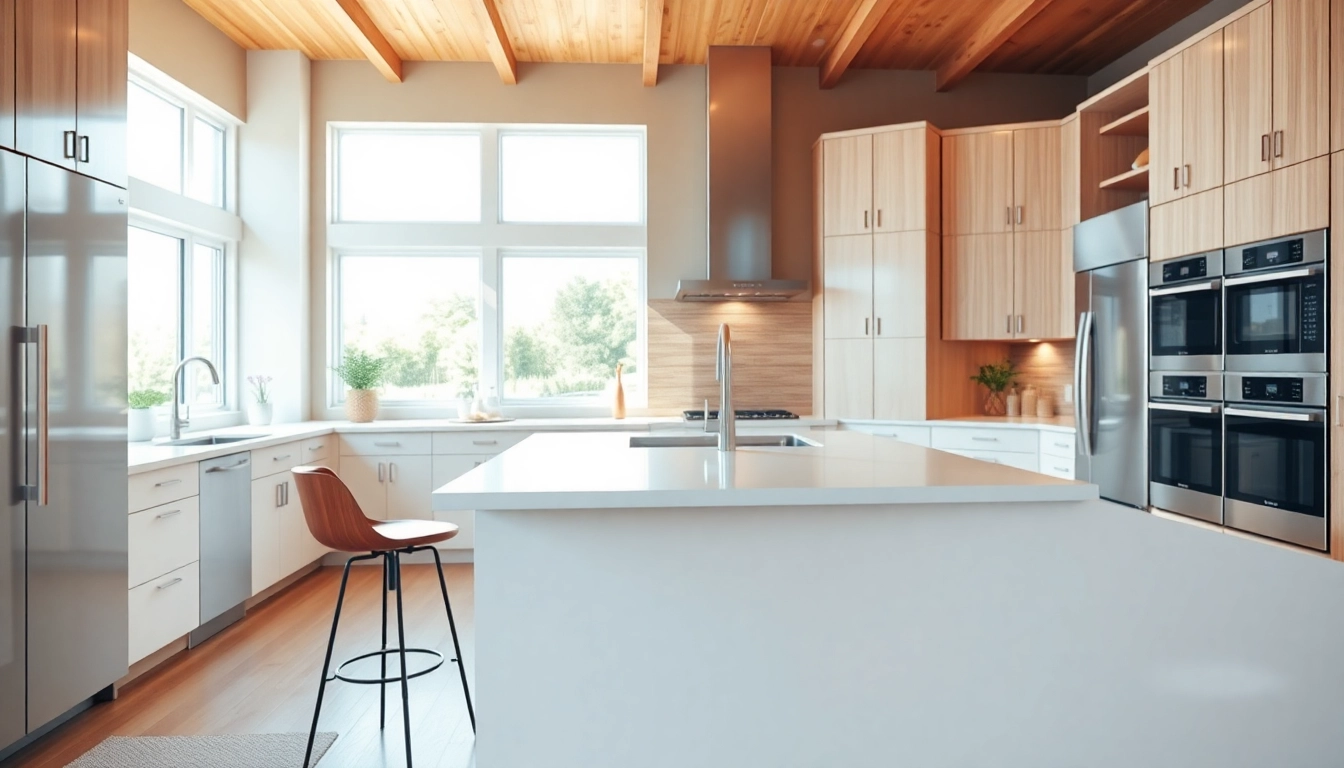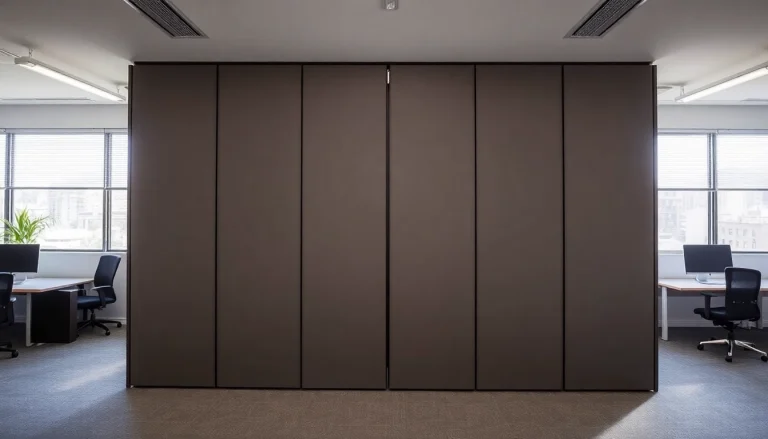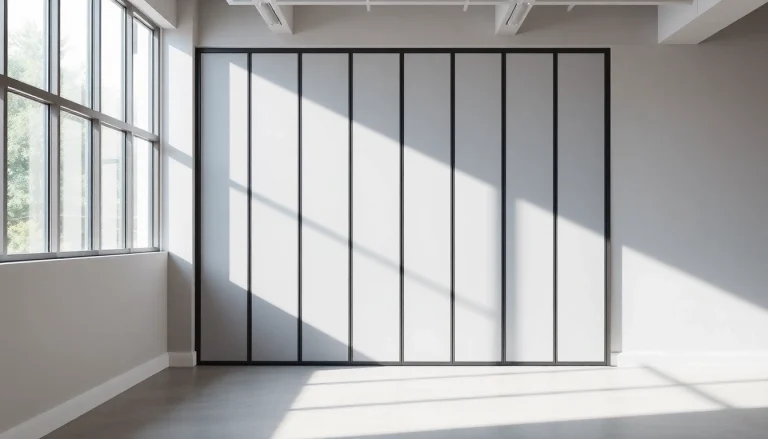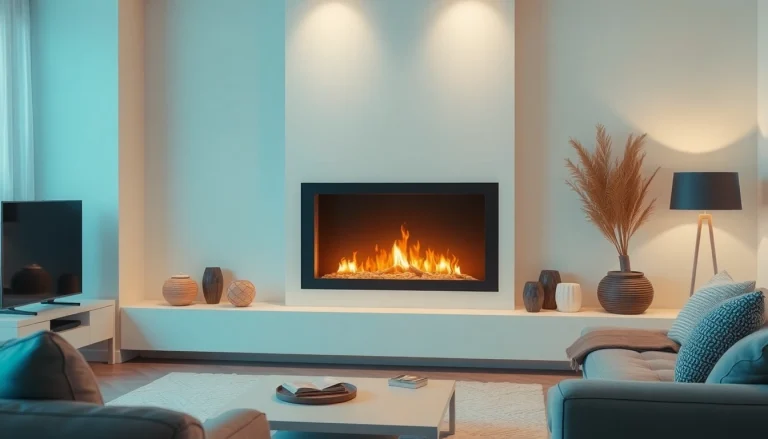Understanding the Basics of a Kitchen Remodel
Embarking on a kitchen remodel is an exciting yet daunting journey for many homeowners. Often, the kitchen is referred to as the heart of the home, serving as a gathering spot for family and friends. A well-planned remodel can reflect your personal style while enhancing functionality. To achieve a successful outcome, you need to understand several essential components that define a kitchen remodel.
What to Consider Before Starting Your Kitchen Remodel
Before you plunge into your kitchen remodel, there are important considerations to take into account:
- Define Your Goals: Determine what you want to achieve with your remodel. Are you looking to improve functionality, update aesthetics, or increase your home’s value?
- Assess Your Space: Consider the current layout and how you can optimize it. Do you need more storage, counter space, or perhaps an open-concept design?
- Research Styles: Investigate various design styles (modern, traditional, farmhouse, etc.) to see what resonates with you.
- Plan for Disruption: Understand that a remodel can be disruptive. Plan meals in advance and make arrangements for where you’ll eat during the renovation.
- Understand Local Permitting Regulations: Before starting, ensure you have the necessary permits based on your local regulations to avoid legal complications down the line.
Setting Realistic Budgets for Your Kitchen Remodel
Budgeting is arguably one of the most critical aspects of a successful kitchen remodel. To set a realistic budget:
- Determine Your Total Budget: Establish a figure that encompasses your entire kitchen remodel, including materials, labor, and potential contingencies.
- Break Down Costs: Itemize your budget into categories like cabinets, countertops, appliances, flooring, and labor to see where you can adjust expectations.
- Consider Return on Investment: Focus on updates that will add the most value to your home. For instance, modernizing cabinets or adding energy-efficient appliances can lead to a higher return on investment.
- Factor in Unexpected Expenses: Always allocate at least 10-20% of your budget for unexpected expenses. Renovations often unveil hidden issues that need addressing.
Choosing the Right Style for Your Kitchen Remodel
The style you choose will significantly impact the overall ambiance of your kitchen. Consider mixing elements from different styles for a unique touch. A few popular kitchen styles include:
- Modern: Characterized by sleek, minimalist designs and high-quality materials.
- Traditional: Focused on craftsmanship with warm colors and natural materials.
- Transitional: A blend of traditional and modern styles for a timeless aesthetic.
- Farmhouse: Often incorporates rustic elements, such as reclaimed wood and vintage fixtures, promoting a cozy, lived-in feel.
Essential Elements of a Successful Kitchen Remodel
Several essential elements contribute to the functionality and aesthetic appeal of your remodeled kitchen. By focusing on these areas, you can create a space that is both beautiful and efficient.
Cabinetry Options for Your Kitchen Remodel
Cabinets are not only functional but also affect your kitchen’s visual weight. When selecting cabinetry:
- Material: Consider wood for a classic look, or laminate for a modern twist. Each material offers distinct advantages and price points.
- Style: Choose between shaker, flat-panel, or raised-panel styles to align with your chosen kitchen theme.
- Color: Light colors can make your kitchen feel more spacious, while darker hues can create a dramatic effect. Don’t forget about the finish: matte, glossy, or textured.
- Storage Solutions: Innovate with pull-out shelves, lazy Susans, and built-in dividers to enhance organization.
Countertop Choices to Enhance Your Kitchen Remodel
Countertops are a significant component of kitchen design. When selecting the perfect countertop:
- Material Options: Explore choices like granite, quartz, marble, laminate, and butcher block. Each has unique advantages concerning durability and maintenance.
- Color and Pattern: Match your countertops to the cabinetry and overall kitchen palette. Patterns can add visual interest but be cautious about clashing with other elements.
- Thickness: Countertop thickness can affect the overall look; thicker slabs tend to read as more high-end, while thinner surfaces deliver a minimalist feel.
- Functionality: Consider practicality and usability; for example, butcher block might suit avid cooks, while quartz can provide low-maintenance options.
Lighting Solutions in Your Kitchen Remodel
Effective lighting is crucial for creating an inviting kitchen environment. Here are some lighting solutions to consider:
- Ambient Lighting: General lighting that fills the room. Recessed lights are a popular choice for this purpose.
- Task Lighting: Focused lighting that helps with specific tasks, such as pendant lights above an island or under-cabinet lights.
- Accent Lighting: Accentuate specific features of your kitchen, like cabinet lighting or stylish fixtures, to create ambiance.
- Energy Efficiency: Consider LED lights for both functionality and energy savings. They last longer and produce less heat.
Common Challenges in Kitchen Remodeling
No kitchen remodel is without its challenges. Understanding potential pitfalls can help you mitigate them effectively.
How to Overcome Budget Constraints in Your Kitchen Remodel
Budget constraints are common but can be managed with careful planning and creativity:
- Prioritize Needs vs. Wants: Focus on essential elements first. A beautiful backsplash is nice, but functional appliances should come first.
- DIY Where Possible: Consider tackling simpler tasks yourself, such as painting or installing fixtures, to cut down on labor expenses.
- Shop Smart: Look for discounts on appliances and materials. Consider shopping during sales events or exploring secondhand sources.
- Flexibility is Key: Be open to alternative materials and styles that can deliver the same aesthetic but at a lower cost.
Managing Time and Expectations During a Kitchen Remodel
Managing the remodeling timeline can be tricky. Here are some tips to keep your project on track:
- Create a Detailed Timeline: Break the project down into phases. Assign a realistic timeframe to each phase to keep the project organized.
- Communicate Effectively: Maintain open communication with contractors and suppliers to prevent misunderstandings that can cause delays.
- Prepare for Delays: Natural disasters, shipping delays, and unforeseen construction issues can arise. Accept that it’s normal for timelines to shift.
- Regular Check-Ins: Schedule meetings or updates from your contractor to monitor progress and address any concerns early.
Dealing with Unexpected Issues in Your Kitchen Remodel
Unexpected issues can plague any remodel, but knowing how to handle them can save you stress:
- Prepare for Surprises: Set aside a contingency budget to handle surprise repairs (e.g., plumbing or electrical issues).
- Stay Informed: Understand that changes in the project scope may affect timelines and budgets. Keeping informed helps manage expectations.
- Be Resourceful: Have a list of trusted professionals available for every scenario—from emergency plumbing to electrical fixes.
- Focus on Solutions: When issues arise, shift your mindset from problems to solutions to aid in decision-making and progress.
Inspiration and Design Ideas for Your Kitchen Remodel
Finding inspiration for your kitchen remodel can be exciting. Exploring the latest trends will help you refine your vision.
Color Schemes That Work Well in a Kitchen Remodel
Color can significantly affect the mood in your kitchen. Here are some successful color schemes to inspire you:
- Neutral Tones: Whites, grays, and beige create a calming backdrop and allow flexible decoration.
- Bold Accents: Bright yellows or deep blues add personality when used sparingly against neutral cabinets and countertops.
- Monochromatic Schemes: Different shades of a single color can create a chic and cohesive appearance.
- Natural Colors: Earthy greens and browns provide a rustic feel and work well with natural materials.
Functional Layouts for an Efficient Kitchen Remodel
Functionality is the cornerstone of any kitchen layout. Here are some layouts that maximize efficiency:
- U-Shaped: Great for maximizing space, offering three walls of counter space and storage.
- L-Shaped: Creates an open flow, ideal for smaller kitchens, while still offering sufficient counter area.
- Galley: Excellent for smaller spaces; this design allows for efficient movement and can enhance cooking workstations.
- Open Concept: Combining kitchens with dining or living areas encourages social gatherings and enhances spatial perception.
Current Trends in Kitchen Remodel Designs
Kitchens evolve alongside trends. Here are some of the hottest trends to consider for your remodel:
- Sustainable Materials: Eco-friendly materials are gaining traction. From bamboo cabinets to recycled tiles, sustainability is key.
- Smart Kitchens: Technology integration is crucial for modern kitchens. Smart appliances can enhance convenience and energy efficiency.
- Mixed Materials: Combining materials like wood with metals or glass in a single kitchen adds warmth and luxury.
- Open Shelving: This trend promotes accessibility and helps create a light, airy feel while showcasing stylish dishware.
Next Steps After Completing Your Kitchen Remodel
Once your kitchen remodel is complete, maintaining its beauty and functionality is essential. Consider these final steps:
How to Maintain Your Newly Remodeled Kitchen
Proper maintenance extends the life of your kitchen. Here are some maintenance tips:
- Regular Cleaning: Develop a routine for cleaning surfaces, appliances, and fixtures to prevent buildup and damage.
- Be Careful with Chemicals: Choose gentle cleaning products that won’t harm your surfaces. Always test a small area first.
- Inspect Regularly: Keep an eye on caulking, cabinets, and appliances for wear or necessary repairs.
- Stay Organized: Use storage solutions that help keep your kitchen organized, reducing clutter and improving efficiency.
Adding Personal Touches Post-Kitchen Remodel
Personalizing your space will help make it feel like home. Here are ways to express your style:
- Decorative Accessories: Incorporate art, fresh flowers, or stylish bowls to bring personality to your countertops.
- Textiles: Use kitchen towels, rugs, and curtains that reflect your personal style and color palette.
- Plants: Adding greenery not only beautifies but can also improve air quality and add freshness.
- Open Shelves: Showcase your favorite dishware, cookbooks, or decorative items on open shelves for an inviting look.
Engaging with Professionals for Future Improvements
Once your remodel is complete, consider building relationships with professionals for ongoing support or future projects:
- Culinary Experts: If you love cooking, consult a culinary expert to optimize your kitchen for cooking efficiency.
- Interior Designers: For additional decor advice, connect with an interior designer who can help elevate your space without major renovations.
- Contractors: Maintain a relationship with renovation contractors for potential future projects; it can save time in finding trusted help.
- Home Inspectors: Regular inspections can pinpoint emerging issues, ensuring your kitchen remains in great condition over the years.
Your kitchen remodel is a significant investment and should ultimately reflect your tastes and needs. By following this comprehensive guide, you can navigate the complexities of remodeling your kitchen with confidence and creativity, creating a space that will thrive for years to come.








